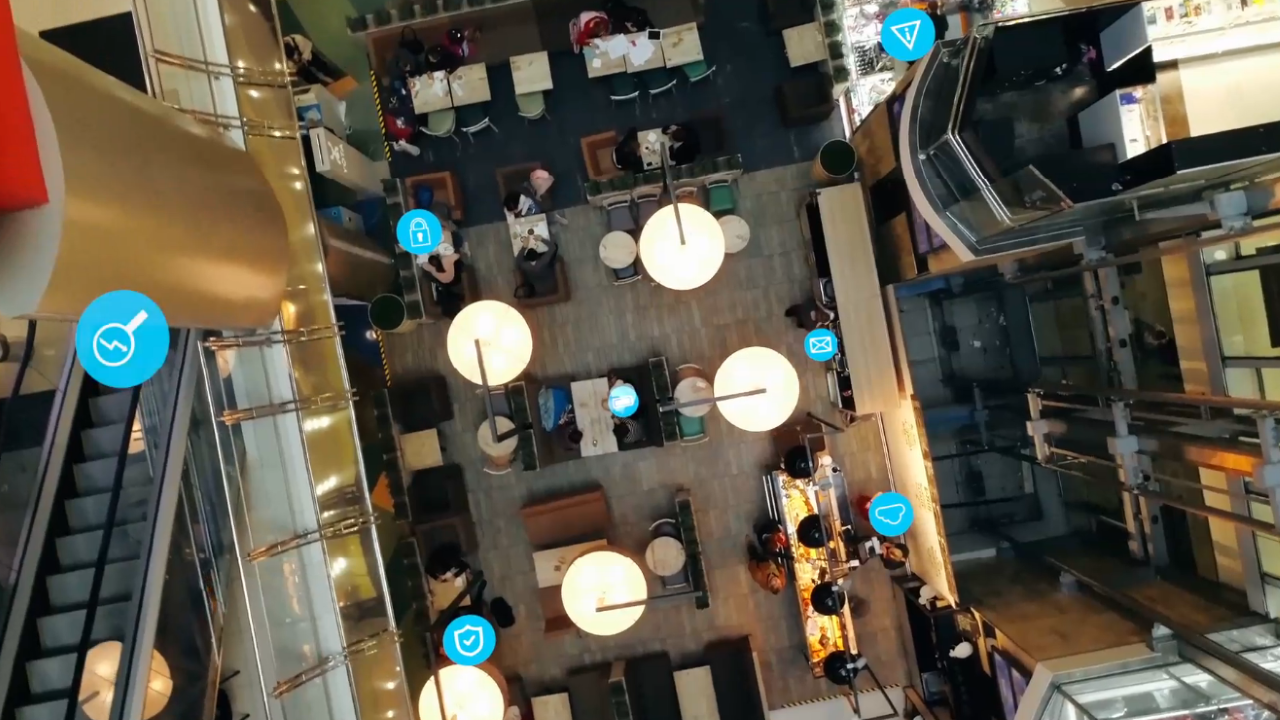
How ‘Healthy’ are Your Workers’ Mobile Devices? (Do You Really Even Know?)
By 2025, the number of IoT (Internet of Things) connected devices worldwide is expected to reach 75 billion, and with hundreds of thousands of mobile employees relying on these devices out on the front lines – both in the field and within the four walls of your facilities – there’s a real premium on knowing how well every device is performing. Yet, many organizations are paying the price of ‘not knowing’ such information.
In a recent ‘State of Enterprise Mobility’ report, 50 percent of professionals surveyed reported experiencing mobile device failures on a monthly basis, which impacted their ability to do their work. Even worse, nearly 40 percent of respondents claimed that their mobility issues have increased over the past 12 to 18 months. Given the correlation between mobile device performance and worker performance, greater attention must be given to proactively managing enterprise devices and pre-empting device ‘health’ issues.
‘Failure Is Not an Option’
I understand that most IT teams are stretched thin given the proliferation of technology in the enterprise. It can be challenging to balance mobile device management (MDM) tasks against other systems’ modernization and maintenance priorities. As a result, I’ve seen several companies become mostly reactive rather than proactive in managing device performance. In many cases, companies wait for devices to show signs of poor health – or fail completely – before taking action. And those who do attempt to proactively assess device performance do so at the most basic level, relying solely on physical inspections, human decision making and paper-based reporting.
The problem is that such reliance on guesswork or hindsight impacts employee productivity, which impacts operational efficiency and ultimately the bottom line. Mobility and productivity are synonymous these days: if a device goes down, so does a worker. And we know the potential ripple effect of the smallest disruption in today’s field service or supply chain-connected workflows.
In the couple of minutes it may take for a warehouse worker to grab a replacement mobile device from a charging station, fulfillment of dozens of orders may be stalled, leading to delayed shipments and missed delivery deadlines – something that could be equally detrimental to small-and-medium-sized businesses (SMB) and global corporations alike. And it could take a utility field engineer hours to ‘blindly’ diagnose a power outage if his mobile device isn’t working like it should. On the other hand, it could take him minutes if he’s able to plug the tablet into the system to automatically retrieve error codes or troubleshoot the system on a broader scale. In other words, the impact of mobile device performance extends far beyond your front line. Your customers, partners and entire communities could feel the effect.
That’s precisely why proactive mobile device management should be a priority for every organisation, no matter the size or industry. Actually, organisations should be employing technology solutions that surpass mobile device management (MDM) and asset repair management systems to pre-empt issues. Worker mobility is just that important.
Taking Back Control: Real-Team Mobile Device Visibility Improves Serviceability
This may not be well known (yet), but innovative enterprise-grade device manufacturers are utilising sensors, RFID, IoT and analytics solutions to provide companies such as yours with incredibly actionable insights about each device’s location and status in real time, around the clock – assuming you are giving your workers enterprise-grade mobile computers, tablets and printers.
And the best part is that these ‘operational visibility and control’ services are becoming easily accessible and affordable. They’re also becoming quite automated, which means it’s no longer a burden to proactively monitor and maintain workers’ mobile devices.
Unlike traditional ‘consumerised’ MDM offerings, these enterprise device management services are no longer based just on a break-fix model (where action is taken after a problem has hit the business). They are much more expansive in their monitoring (and return more intelligent and actionable insights) than routine maintenance processes, which can miss issues simmering below the surface, faults that develop in between inspections or future factors that humans simply cannot detect. And since the device visibility and care services have evolved to a digital platform that aggregates both big data and small actionable data about the health of workers’ devices, they provide real-time insight to all stakeholders, including those outside the IT suite or in non-analytical roles. This ‘scientific crystal ball’ approach underpins cost-effective, confident business decision making while taking the burden of MDM (and worker productivity) off IT alone.
For example, services such as the ones that Zebra offers customers will aggregate data from multiple sources to identify any potential opportunity to improve device performance or any threat to worker productivity because of a device issue. This video quickly shows how it works:
Over time, algorithms applied within enterprise device monitoring systems such as ours learn from previous events that may impact the performance of your devices, such as seasonal spikes in usage. This can help us collectively predict increased usage demands that could strain devices or potential system failures (i.e. when x happens, y happens) and take remedial action in good time. And as I mentioned before, these systems are highly intelligent, meaning they analyze and diagnose the mobile solution holistically to answer business-critical questions such as the below in order to inform device management actions:
- Where are our devices?
- Are they fully charged?
- Are they readily available?
- How often are they being utilized?
- Are software/app updates or security patches due (or overdue)?
- How well are devices connecting with the network?
- How many are being repaired and how many technical support cases are open?
- How is the device rollout across the organisation progressing?
- Do we have the right amount at each location?
- Are there issues with certain device features? Do they need to be reconfigured?
Prevention (or Prediction) is Better Than the Cure (i.e. Replacement)
If you’re reading this and thinking ‘my MDM solution already generates these insights for me’, remember that MDM solutions are transactional in nature and geared toward IT users only. That doesn’t help you get ahead of issues.
On the flipside if you’re saying, ‘I don’t need such a sophisticated service’, it is critical to first consider your business’ growing dependence on connected mobile assets and then understand that services such as Zebra VisibilityIQ™ Foresight, Zebra VisibilityIQ DNA and Zebra OneCare®, though sophisticated in their level of data aggregation and analysis, are quite simple to implement and leverage.
Yes, VisibilityIQ Foresight intelligently combines data from unique data sources such as contracts, repair and case management systems using the Zebra Savanna™ Internet of Things (IoT) platform and available MDMs. However, it translates the data into an easy-to-grasp, color-coded, one-view dashboard that clearly indicates needed actions and alerts for your entire mobile device fleet.
That is why services such these are so valuable: they drive a proactive approach to mobile technology purchasing and planning; increase solution reliability; improve worker productivity and, therefore, customer satisfaction; and reduce environmental, health and safety and data security risks – all of which increase the return on investment (ROI) for your entire mobility solution and increase the output of your most valuable asset, your employees.
Now, if the bottom line tends to drive your tech decisions (which is common in enterprise environments), remember that mobility budgets can quickly become leaner due to poorly timed servicing, which results in unforeseen issues and steep repair or replacement bills. At the same time, overbuying devices to ‘stock up’ in case of issues or because you can’t predict mobility lifecycles can become wasteful.
The Takeaway
It’s true that you can learn from hindsight but having foresight – and the ability to act right now to avert a future device failure – will ensure your mobility solution does what it’s supposed to do: keep your employees operating at peak efficiency levels.
Supplementing your MDM (or replacing manual device management processes) with more intelligent enterprise device ‘visibility and control’ tools is the key to predicting the unpredictable and avoiding the ‘avoidable’ device performance issues that disrupt your business and hurt your bottom line. Foresight is the future. Don’t get stuck in the past (or lose sight of the present).
###
Editor’s Note:
Learn more about the clear, customised and actionable mobile device performance metrics available through Zebra’s VisibilityIQ Foresight, VisibilityIQ DNA and Zebra OneCare services on our website. Or contact our Services team to set up a demo to see exactly how such intelligence services could benefit your organization.

Nicholas Sawyer
Nick Sawyer has more than 25 years of experience in Service and Account Management, Business Development and Customer Service roles. He is currently the lead for Zebra’s Managed and Support Services Regional Portfolio Management team. The team works to drive globally-aligned, regionally-inspired Zebra Service offerings that maximize the availability of customers’ enterprise devices and produce critical business insights that help to deliver a performance edge across the enterprise.




